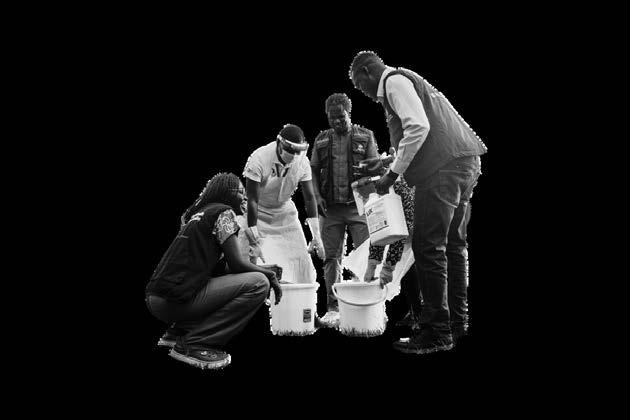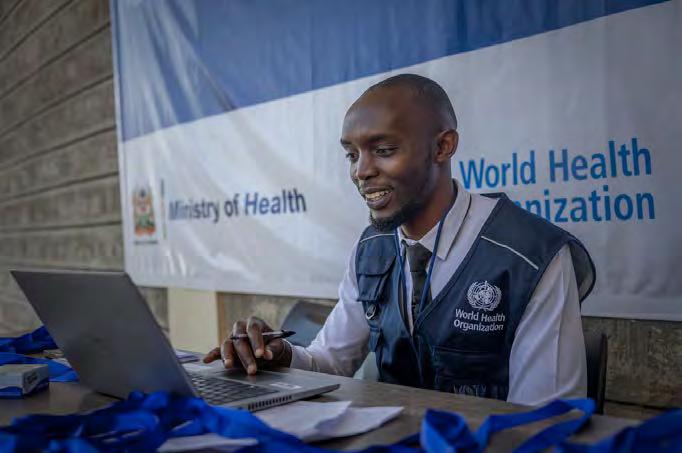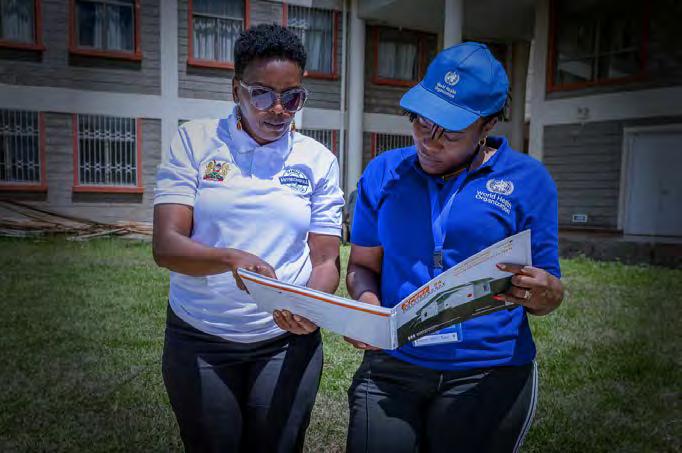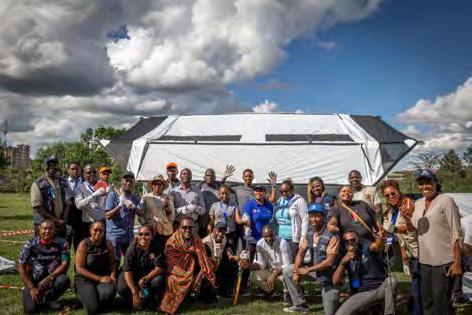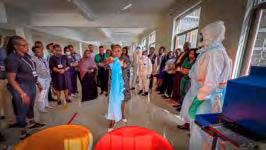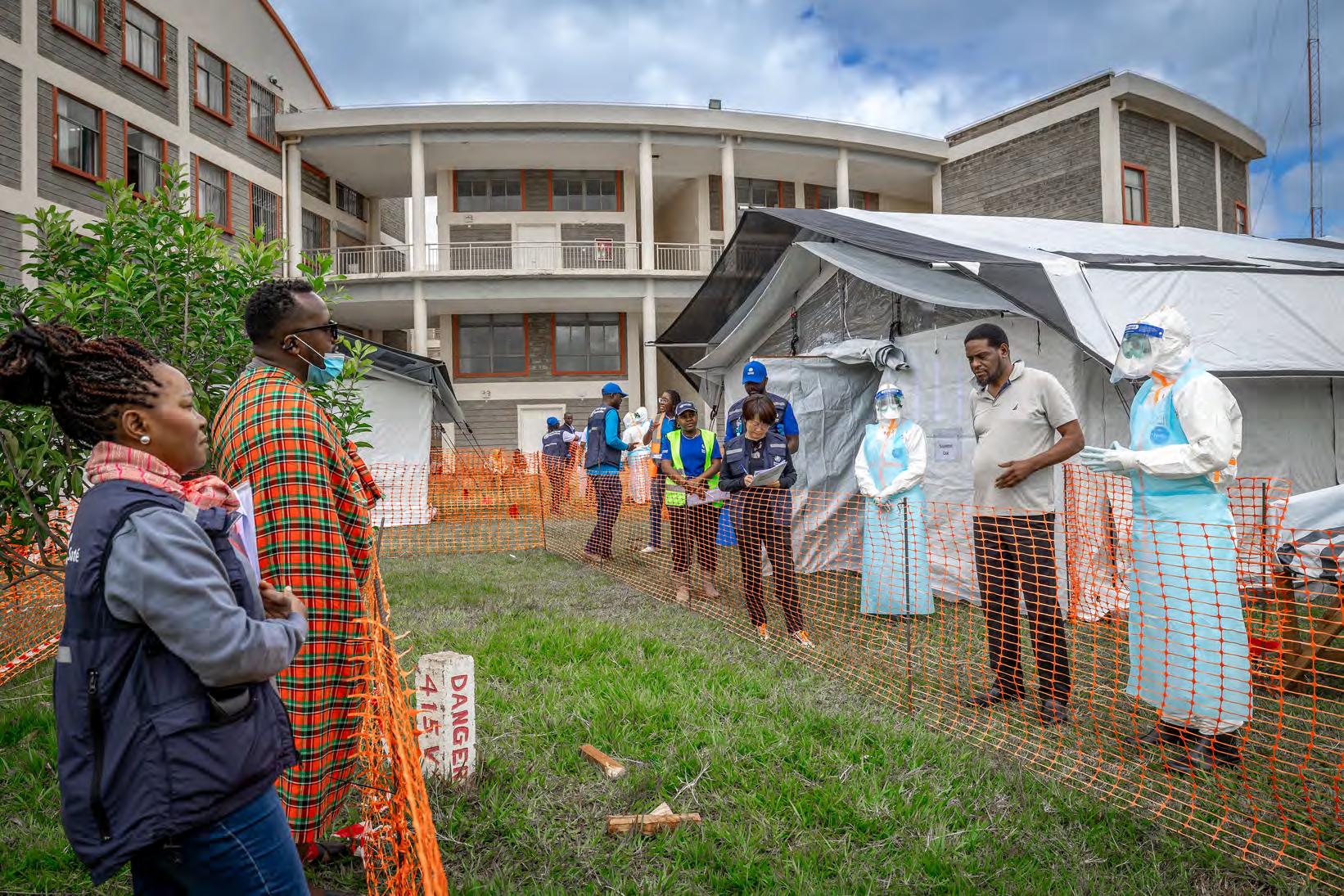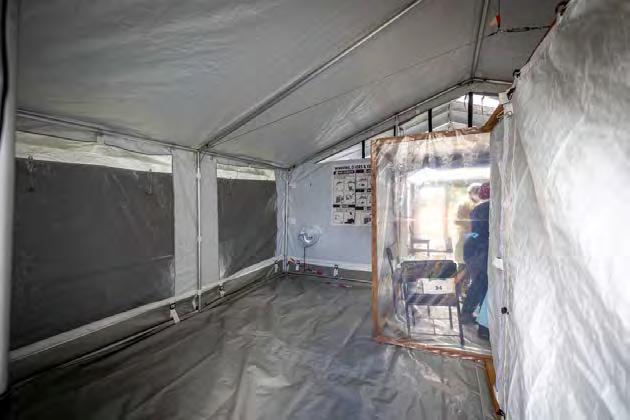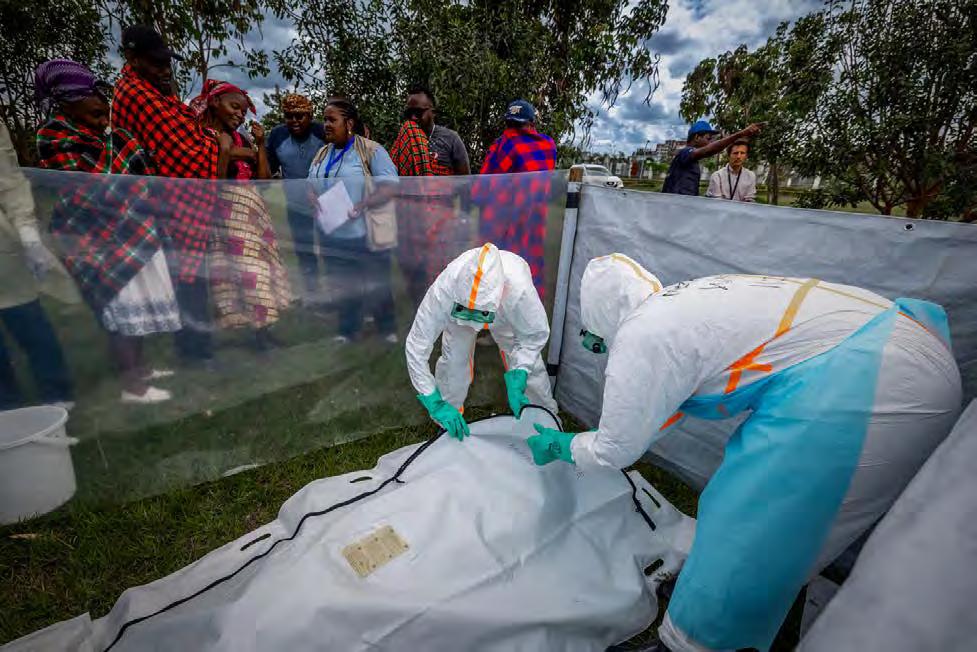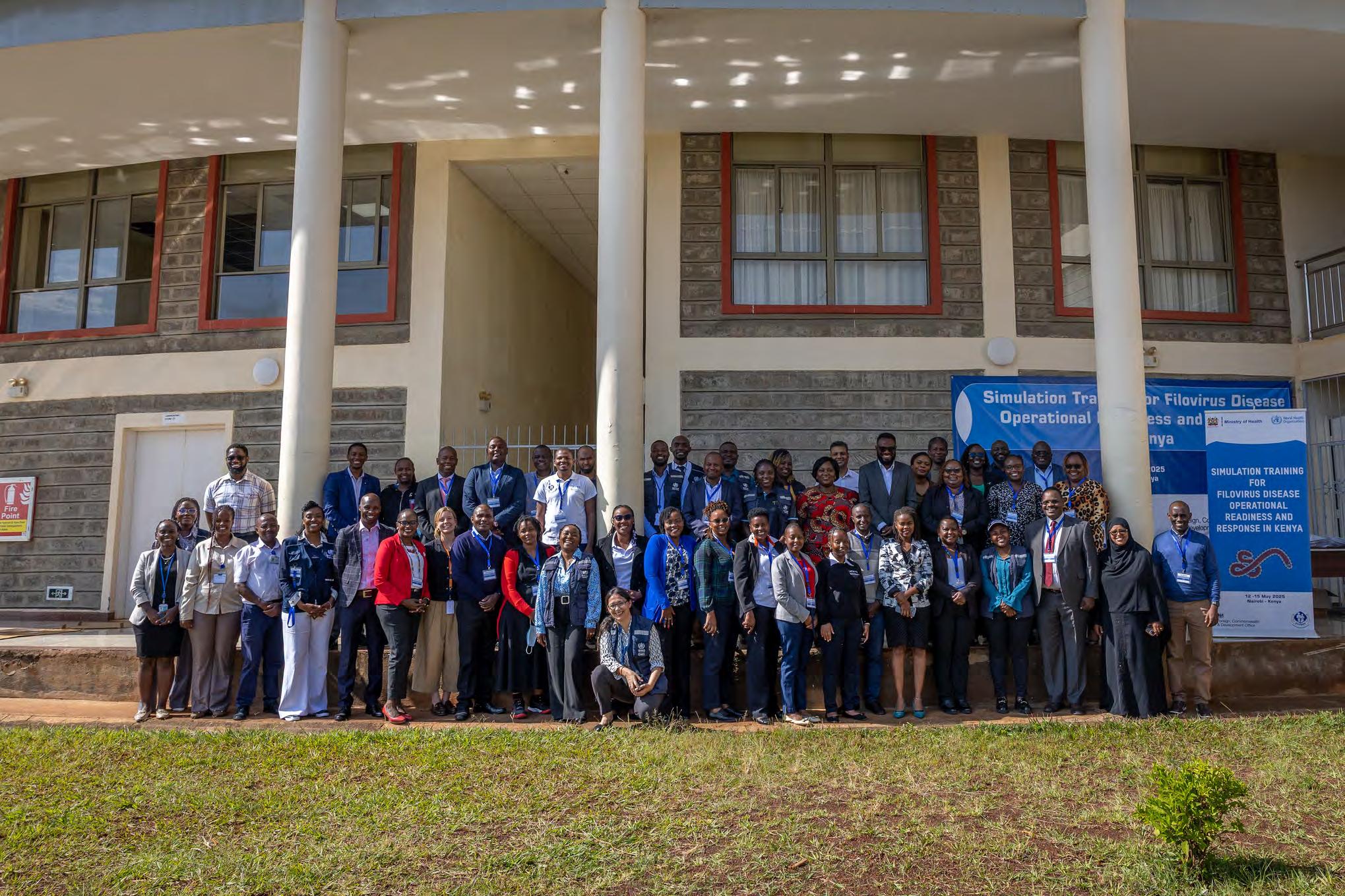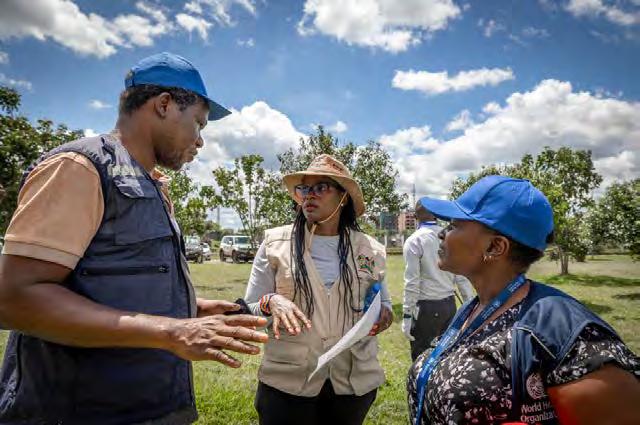FilovirusDisease
OperationalReadiness: StrengtheningKenya’sRapid ResponseCapacity
This photo album captures key moments from the filovirus disease operational readiness training, hosted by the WHO regional office for Africa in Nairobi emergency preparedness and response hub.
The training brought together over 45 multidisciplinary frontline responders from across Kenya, including case managers, laboratory specialists, mental health professionals, public health officers, infection prevention and control experts, and logistics teams. Participants represented the WHO Kenya Country Office, The Ministry of Health of Kenya, Kenya National Public Health Institute, Kenya Defence Forces, Port Health Services, Kenyatta University Teaching, Referral and Research Hospital, and other key partners.
Structured around five core technical pillars such as; risk communication and community engagement, operations support and logistics, case management, infection prevention and control (including water, sanitation and hygiene), and health information and risk assessment this training provided a strong blend of classroom learning and hands-on simulation.
Through this practical approach, participants gained real world experience in setting up and operating a filovirus treatment centre in accordance with WHO standards. Their dedication, teamwork, and professionalism demonstrate the critical importance of building and sustaining national and regional capacities to prepare for and respond to public health threats.
We extend our sincere appreciation to all facilitators, technical experts, and participants for their commitment to this successful training. Through the images shared, we catch a glimpse of the exceptional efforts carried out.
Dr.AbdourahmaneDiallo WHORepresentativetotheRepublicofKenya
BULDING KNOWLEDGE
beforethesimulation
The four-day Filovirus Disease Operational Readiness Training commenced with structured technical lectures, tailored to address priority gaps identified in Kenya’s national readiness checklist.
Led by expert facilitators from the WHO AFRO team with first-hand experience responding to filovirus outbreaks.
As threat of filovirus disease in the region continue to evolve and the risk of cross border transmission growing, readiness remains vital.
“This training is timely it helped stregthen Kenya’s readiness for a filovirus outbreak, I hope these lessons will guide improved preparedness, especially at the community and primary healthcare levels, where early response is critical,” said Sarah Fordah, a Public Health and Humanitarian Information Management Specialist at the WHO Emergency Hub in Kenya and one of the facilitators.
The integration of technical instruction with realistic simulation scenarios enabled participants to apply their knowledge under pressure, mirroring the conditions of an actual outbreak. This approach not only improved technical competencies but also strengthened Kenya’s first responders ability to respond effectively and rapidly to a filovirus outbreak.
Before any setup it is essential to gain community trust and approval. This helps with community acceptance, reduce fear or resistance, and promote cooperation during outbreak response.
BUILDING THE FOUNDATION:
SettingUpanEbolaTreatmentCenter
These images illustrate the foundational steps taken to establish a fully functional ebola treatment center during a simulation exercise.
The setup followed a systematic, step-by-step approach aligned with WHO standards and operational protocols.
Establishing clear physical boundaries guide safe operations, organise space efficiently, and help teams quickly orient themselves in a high-pressure emergency environment.
Following standard protocols, the team has already marked out zones using tape and stakes to establish the low risk, transition, and high risk areas and now began with erecting tents and installing key infrastructures.
Through coordinated teamwork and adherence to operational guidelines, the team successfully completed the setup of the ebola treatment unit.
Understanding this structured setup process is crucial for emergency responders and health authorities. It equips them with the skills and systems needed to rapidly deploy a response team capable of building a functional treatment center during any filovirus outbreak- saving lives and limiting transmission.
DONNING PERSONAL PROTECTIVE EQUIPMENT
forSafeCaseManagement
In the designated donning area, response personnel put on full personal protective equipment including coveralls, gloves, face shields, masks, aprons, and boots following infection prevention and control procedures.This exercise allowed the team to apply key lessons from earlier training sessions and put lecture based guidance into practice in preparation for managing suspected Ebola cases.
Facilitators provided hands-on training on the correct procedures for donning and doffing personal protective equipment
After the training, during the simulation exercise, the teams donned personal protective equipment once more and put their training into action while interacting with both confirmed and suspected cases.
Before any patient interaction in the wards, the teams ensure the rooms were fully prepared. This includes disinfecting beds, arranging critical supplies, and setting up the space for safe care all carried out while fully donned and operating under strict infection prevention and control measures.
Handwashing stations with chlorine and designated waste bins were also placed in line with infection prevention and control protocols.
This preparatory process was repeated consistently and reinforced the discipline, coordination, and attention to detail required for safe and effective outbreak response in real world settings.
SIMULATING SUSPECTED EBOLA CASES
This section follows the coordinated response to a suspected ebola case within the ebola treatment unit during the simulation exercise. The process showcases how trained teams work through each step using standard operating procedures, full protective equipment, and clearly defined roles.
A designated screening area is set up at the entrance to serve as the initial point of contact for all incoming patients.
A suspected Ebola case is seated in the screening area, speaking with trained personnel. The patient provides symptom history and relevant exposure details before clinical management begins.
A more detailed symptom review is conducted to determine whether the patient meets the suspected case definition. This includes further clarification on symptom onset, exposure to bodily fluids and more.
If the patient meets the suspected case definition, health workers proceed to fill out a standardised case investigation form. This data supports contact tracing, outbreak tracking, and case management protocols.
Once a person meets the criteria for a suspected ebola case, the patient is transferred to the ward by the case management team within the treatment unit. Patient movement is carefully coordinated to prevent cross contamination and ensure the safety of both staff and other patients.
Once inside the suspected ward, the case management team conducts full medical examination. Staff communicate observations, patient details, and immediate needs without breaching the risks zones within the treatment unit.
A transparent plexiglass barrier separates the high risk suspected case area so that the clinical support personnel are stationed on the low risk side can record patient data relayed in real time by frontline staff inside the ward.
To conclude the simulation, the team carried out a community engagement exercise to model safe family interaction during an outbreak.
Suspected Case
Brother of the suspected case
Thesuspectedcasesteppedinto acontrolledexternalarea,where hespokewithhisbrotheracross aclearseparationbarrier, supervisedbyhealthpersonnel.
This activity demonstrated how effective risk communication and structured spaces can reduce fear and strengthen trust during outbreak response.
hereisthefullyset-upebola treatmentcenterbuiltbyparticipants duringthesimulationexercise.The layoutfollowsWHOstandards,with clearlyzonedareastoensuresafe patientflowandinfectionprevention
Pictured
SIMULATING CONFIRMED EBOLA CASE
Adter the suspected case simulation, the participants engaged with a confirmed ebola case simulation. This demonstrated the full management process from ambulance transfer to safe burial. The exercise also included community engagement throughout, highlighting the importance of dignified support for affected families.
A confirmed Ebola case is transported to the treatment unit in a designated high-risk ambulance. The transfer team, in full protective equipment to ensure safety of the environment and patient.
Doctors conduct a focused assessment of the confirmed Ebola patient. Vital signs and symptom severity are evaluated.
Clinical staff relay treatment needs and patient updates to colleagues opposite the plexiglass and prepares the requested items for safe transfer into the confirmed case area.
Following the transport of a confirmed Ebola case, the ambulance must be thoroughly decontaminated using chlorine solution. It is essential to prevent cross contamination and ensure continued operational readiness.
Throughout the treatment process, strict infection prevention control measures are continuously enforced. Surfaces are disinfected routinely, waste is disposed of in high-risk biohazard zones, and staff perform hand hygiene at every entry and exit.
SAFE AND DIGNIFIED BURIAL
During filovirus disease outbreaks safe and dignified burials are crucial for preventing further transmission and protecting the health of the community.
Following the patient’s death, the body is managed by a trained safe and dignified burial team in accordance with WHO-recommended infection prevention and control measures.
The body is sprayed with a 0.5% chlorine solution, placed in a leak-proof, impermeable body bag, and double-bagged. All handling is done with full personal protective equipment, and strict protocols are followed to prevent any contact with infectious body fluids.
However, families are allowed to participate by observing through designated observation points where families can safely view or participate in modified burial rituals from a distance
This approach balances public health safety with respect for family dignity and cultural practices, in line with WHO’s Safe and Dignified Burial protocol
Community engagement is not an optional component of outbreak response it is a technical necessity.
Risk Communication and Community Engagement is integrated into every stage of the filovirus outbreak response from preparedness to recovery. Local leaders, families, and health workers collaborate to build trust, encourage early care-seeking, and ensure culturally respectful practices, including safe viewing during burials and involvement in decision-making processes.
During clinical care and after death, community members participate in key areas such as medical waste disposal, selection of safe burial sites, and implementation of infection prevention measures.
In the recovery phase, community engagement plays a vital role in addressing stigma, supporting survivors, and promoting reintegration. Clear, consistent, and culturally sensitive communication helps reduce fear, combat misinformation, and encourage protective behaviors aligned with public health guidelines.
Family of the Simulated deceased.
"Thekeytakeawayfromthistrainingis thatithasequippedparticipantswiththe knowledge,skills,andcompetenciesto managenotonlyviralhaemorrhagic feversbutalsootherhighlyinfectious pathogens."saidJoyceNgunga,oneof thefacilitatorsandanepidemiologist withtheWHOAFRO
jOU
Participantsandfacilitatorsofthefilovirus diseasessimulationtraininggatherfora groupphotoaftercompletinganintensive hands-onexercise.Thetraining,ledbyWHO AFROandpartners,equippedhealthworkers withthecriticalskillsandknowledgeneeded tomanageviralhemorrhagicfeversand otherhighlyinfectiousdiseases.
We commend all participants, facilitators, and partner institutions for their dedication, technical engagement, and collaborative spirit throughout the filovirus disease operational readiness training and simulation exercise.
This photo book captures the professionalism, resilience, and teamwork demonstrated during the training—reflecting WHO’s ongoing commitment to supporting Member States in strengthening core capacities for health emergency preparedness, in line with the International Health Regulations (2005).
The successful collaboration between the Ministry of Health, Kenya National Public Health Institute, Kenya Defence Forces, Port Health Services, Kenyatta University Teaching, Referral and Research Hospital, and WHO underscores the critical value of a coordinated, multisectoral approach to health security.
WHO remains fully committed to supporting the Government of Kenya and its partners in advancing health emergency readiness today and in the face of future threats.
Dr,LivinusMartinsChibueze HeadofEmergencyPrepardenessResponseCluster,WHOKenya
FORMORE INFORMATION &FEEDBACK: ndahendekireg@who.int afkeninfo@who.int
Ardo Umar Farah
Genevieve Print
DESIGN
WRITERS
NancyOkwengu PHOTOS
Ardo Umar Farah
ArdoUmarFarah
EDITORS
Dr.MartinsChibuezeLivinus
Dr.NginaKisangau
Dr.DibaDulacha
GeorgeNdahendekire
ChipoTakawira










